Among the places in the U.S. where Catholic Extension Society has a long and continuous history of support, is the Navajo Reservation—the geographically largest Native American Reservation in the country, located mainly in the Diocese of Gallup, NM.
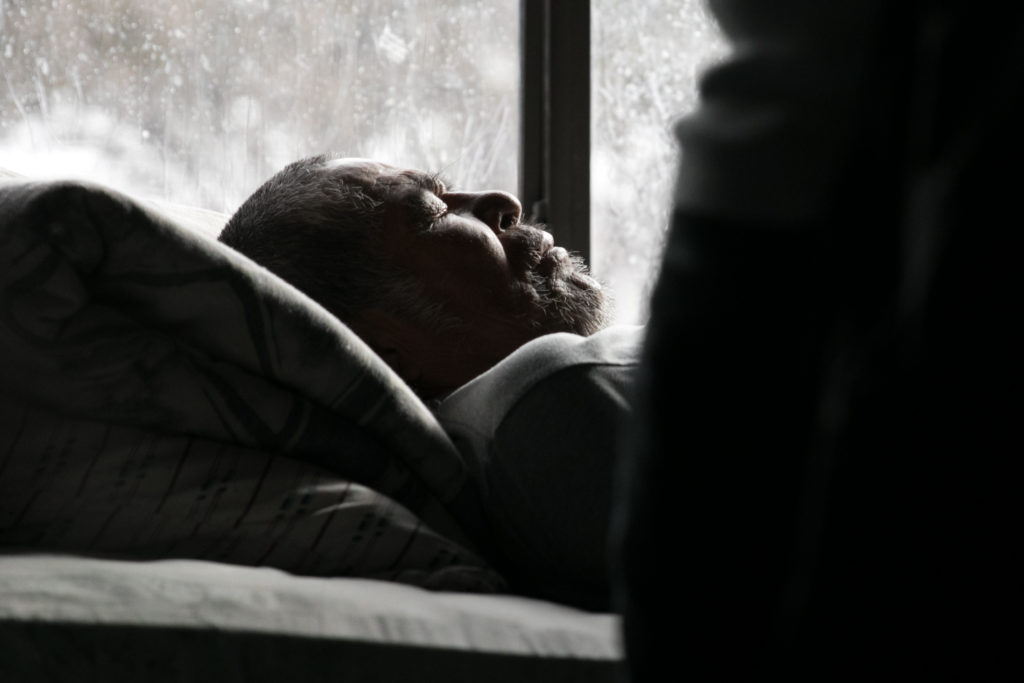
Reports of the fast-spreading pandemic are so concerning in this place where the standard of living resembles the developing world. The rate of per capita infections of COVID-19 trails only New York and New Jersey, making the daily struggle to survive even more difficult for the people of this land.
Catholic Extension supports 15 poor parishes and missions spread across the vast Navajo Nation, which is the size of West Virginia, and serves a population that has many challenges even in “good times.” A recent report estimated that as much as 70 percent of the population was unemployed pre-pandemic. More than a third of the people live below poverty, and a third have no access to running water.
In the past several days, we have spoken with Church leaders and communities we support to understand the reality there and the vital role the Church is playing.
What we can conclude is that in spite of the Catholic Church’s very limited resources in this area, she has not abandoned her people.
Providing the essentials
Sr. Theresa Chato, director of religious education at Our Lady of Fatima in the heart of the Navajo reservation, is among those whose salary is supported by Catholic Extension Society. She has not left the area even though Church services are cancelled for the roughly 800 parishioners they serve.
The parish is still serving as a vital distribution point for food, among families experiencing food insecurity.
She knows well the living situations of her community members and attributes the spread of the disease to the fact that in many households, multiple generations live under one roof. Adding fuel to the fire, some experts suggest, are the underlying health conditions present in the people which make them more vulnerable to the disease. Sr. Theresa happens live in a town, Chinle, AZ with a hospital that serves people from outlying areas, and she has seen the troubling uptick in traffic to the hospital.
Keeping education going without internet access
Meanwhile, 121 miles away in Zuni, NM, we spoke with Fr. Pat McGuire, SMA, who serves three churches, two of which are located on the Navajo Nation in Chichiltah and in Ramah. Catholic Extension Society supports his salary.
As pastor, he says that this has been one of the saddest moments of his life being apart from his people. His parishioners tell him that they miss being together. But, he says he has a renewed “sense of wonder” about the divine presence that inhabits the assembled “body of Christ.” The 71-year-old vowed that he would never take the privilege of gathering with people for granted again, saying “the absence of the Scared Assembly allows me to appreciate the wonder of that which I have taken for granted.”
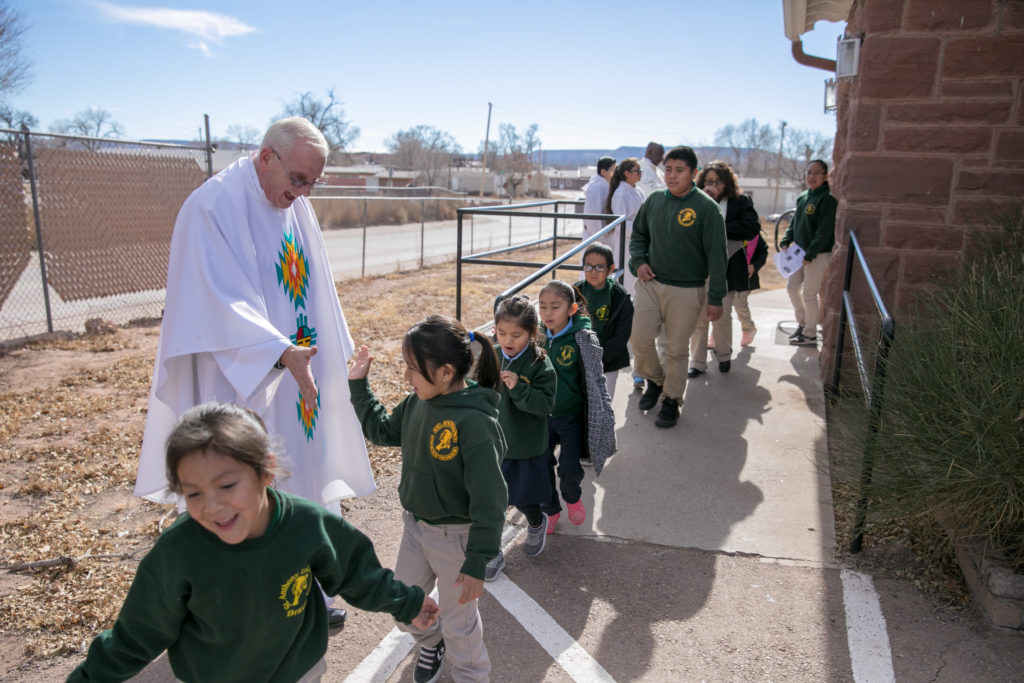
Catholic schools have been a beacon of hope for Native families. Fr. Pat says that the local Catholic school closure has presented special challenges for their people. They had to quickly invent a unique form of distance learning for their school families, since most do not have internet in their homes, and online classrooms are impossible. Instead, study packages are prepared for every student each week then distributed and returned on a drive through system. Lessons are taught by teleconferencing with students.
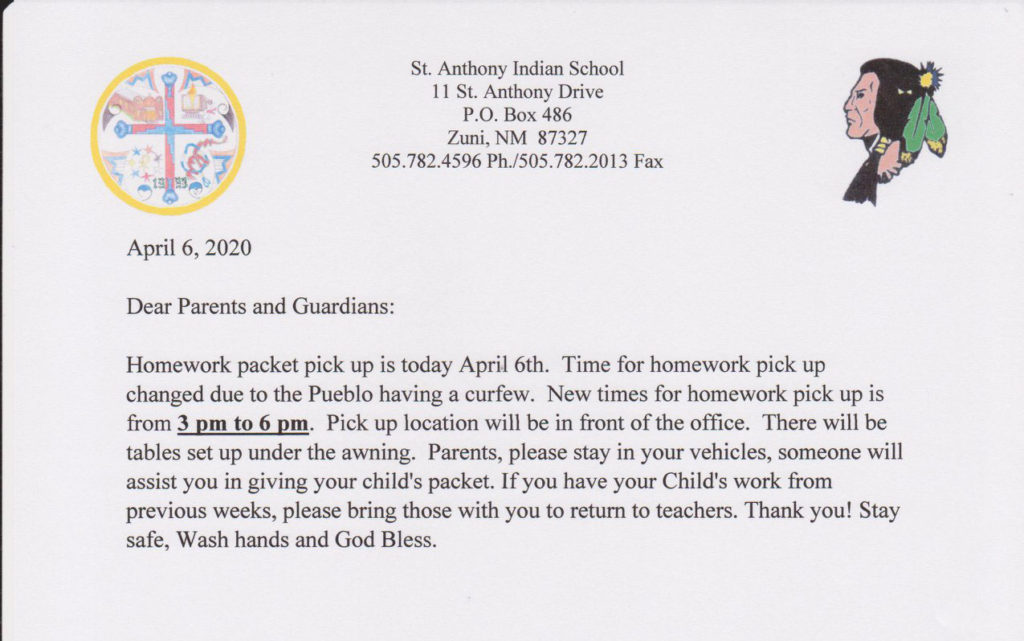
That same teleconferencing system is used to broadcast Masses to the faithful, who listened in on their telephones.
Families in the area also depend on these Catholic parishes for clean drinking water, a service the parish is focused on maintaining in spite of curfews and social distancing regulations currently in effect. They keep their facilities open to the public during certain hours, so that people can access potable water and bring it home.
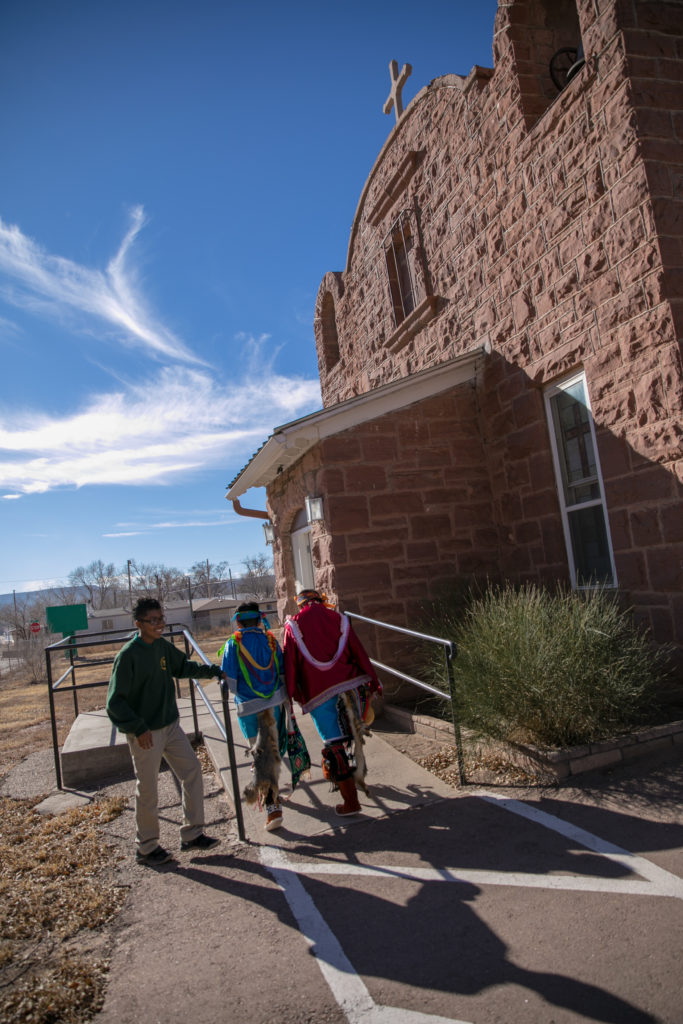
Fr. Pat sees his ministry as reminiscent of apostolic times, “when witness and word were the means of evangelization.” He added, “each in his or her own way with our limited resources find some means to facilitate the Holy Spirit’s action.”
A church to come back to
Some 211 miles away, in the far northwest corner of the reservation, the Daughters of Charity in Tuba City continue their life saving work, which has proudly been supported by Catholic Extension Society during the sisters’ 20-year tenure in this area.
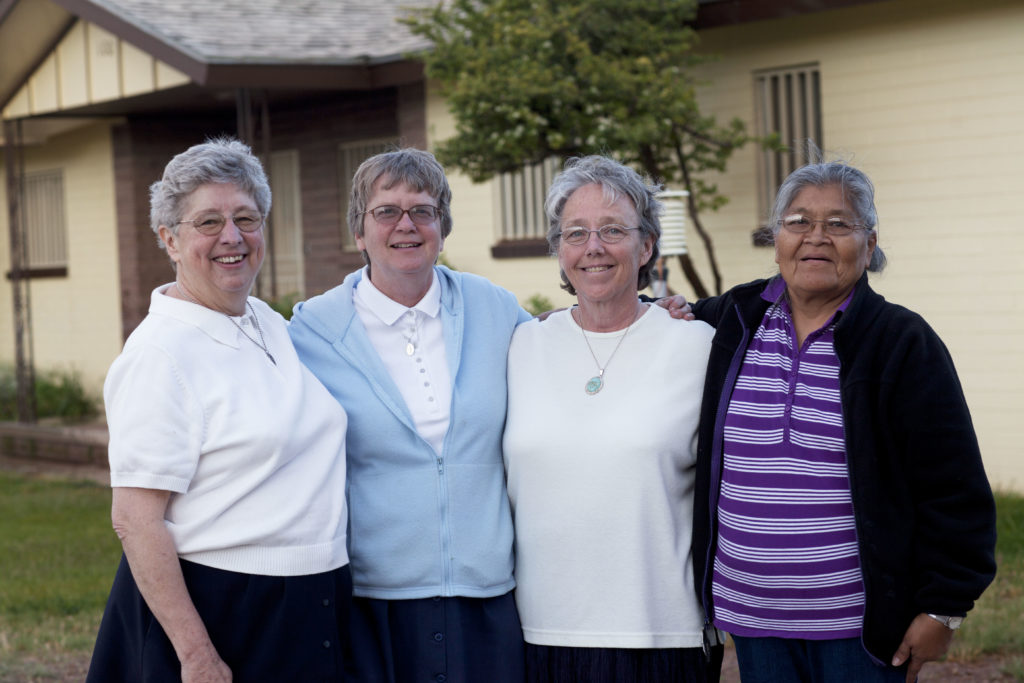
In addition to their pastoral work, the sisters support various charitable causes through the parish, including food distribution to the hungry, and funding the electricity bills of the poor.
These charitable activities depend on the parish’s network and ability to identify those most in need, but the parish is receiving no income itself because people have no capacity for online giving. One of the sisters, Sr. Catherine France, said “when this is over we want to make sure that people have a church to come back to.”
The parish is closed for religious and pastoral services until further notice, but the three sisters who range in age from 77 to 79, are making “visits” by phone. But, they too are finding communication to be difficult with 40 percent of the people lacking electricity. Streaming Mass has been nearly impossible for the population they serve, so they simply leave missalettes outside the parish doors for people to grab and use for personal prayer.
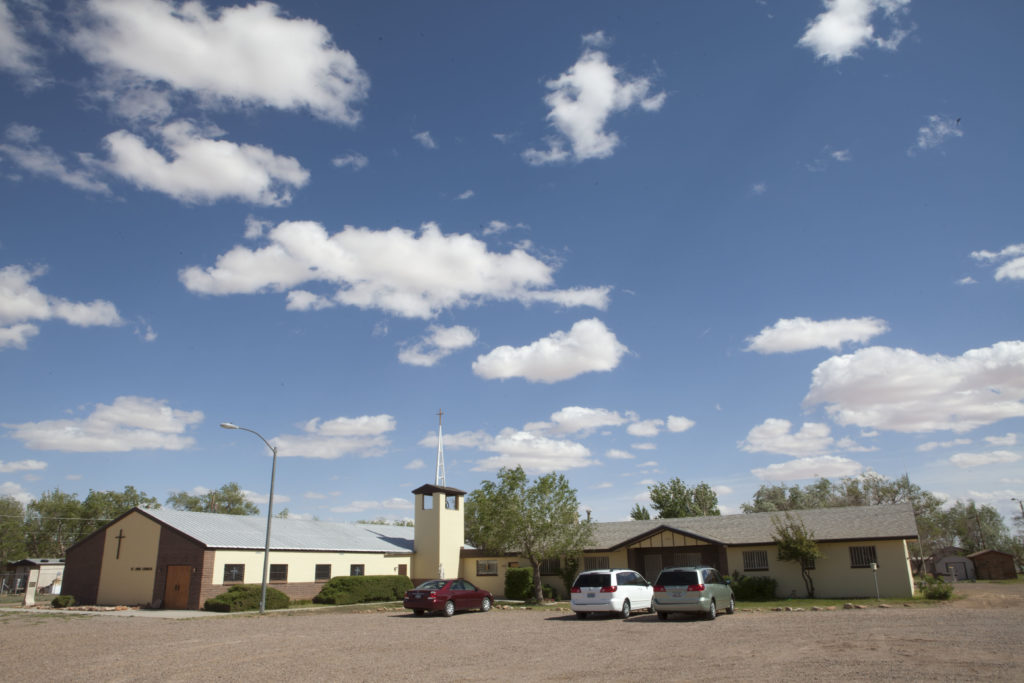
In terms of mental health, the sisters note an increase in depression in their community members. Moreover, they fear an outbreak of post-traumatic stress among medical staff and first responders, who are overworked at their 76-bed regional hospital, where the national guard has had to come in to provide reinforcements.
Nonetheless, the sisters know that their mission is to provide hope to their suffering people. Their actions and the actions of their fellow pastoral leaders on the Navajo reservation supported by Catholic Extension are powerfully demonstrating this:
Even in this time of shelter and isolation, the Church has not abandoned her people, especially in the poorest communities.
The response of the Church on the Navajo nation is a vivid example of what “going to the peripheries” looks like in our country, and why it is so important to ensure that we have vibrant and transformative Catholic faith communities entrenched in areas like these, to accompany the often-forgotten people of our land who face so many challenges.
Faith communities in the United States need your help to continue their life-saving outreach. They cannot do it alone. Express solidarity with impoverished faith communities affected by COVID-19 by giving to our coronavirus response virtual collection basket, praying with and for us and inspiring others by sharing this story.


